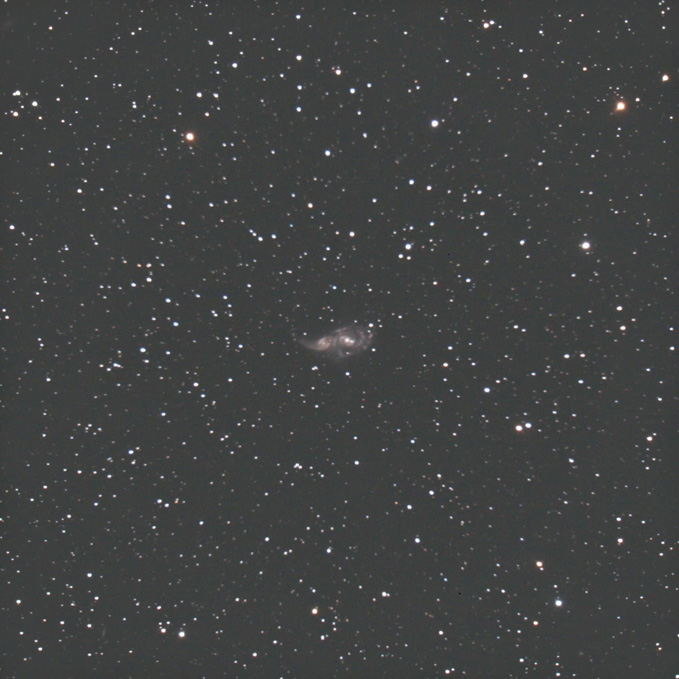| NGC2207 / Galaxy, type SAB(r)c pec II |
|---|
| R.A. | 06h 16m 22.0s (2000.0) |
|---|
| Dec. | -21° 22' 21" (2000.0) |
|---|
| Apparent Size | 4.3×2.7' |
|---|
| Radial Velocity | +2728km/s |
|---|
| Magnitude | 11.6 |
|---|
| Distance | 122 million light yrs. |
|---|
| Group of Galaxies | - |
|---|
| Other IDs | ESO556-8, MCG-4-15-20
UGCA124, PGC18749 |
|---|
|
| IC2163 / Galaxy, type SB(rs)c pec |
|---|
| R.A. | 06h 16m 27.7s (2000.0) |
|---|
| Dec. | -21° 22' 31" (2000.0) |
|---|
| Apparent Size | 3.0×1.2' |
|---|
| Radial Velocity | +2798km/s |
|---|
| Magnitude | 12.6 |
|---|
| Distance | 122 million light yrs. |
|---|
| Froup of Galaxies | - |
|---|
| Other IDs | ESO556-9, MCG-4-15-21
UGCA125, PGC18751 |
|---|
|
This image shows you a pair of small galaxies positioned at western region of Canis Major.
You can find that about 3.5 degrees southwest of beta CMa. But the galaxies are fainter than 11th magnitude,
you need a telescope over 8" in aperture to catch in your naked eyes.
A right galaxy in this image is NGC2207, and another left one has a number of IC2163.
This field is equivalent to western edge of the Milky Way in winter, many faint stars are distributed around the pair.
This pair has gravitational interactions each other,
and it's considered that the galaxies are colliding pair represented by the Antennae in Corvus.
The Hubble Space Telescope (HST) has captured a clear image of NGC2207 and IC2163, and the image shows us their arms are warped by mutual gravitation.
|


